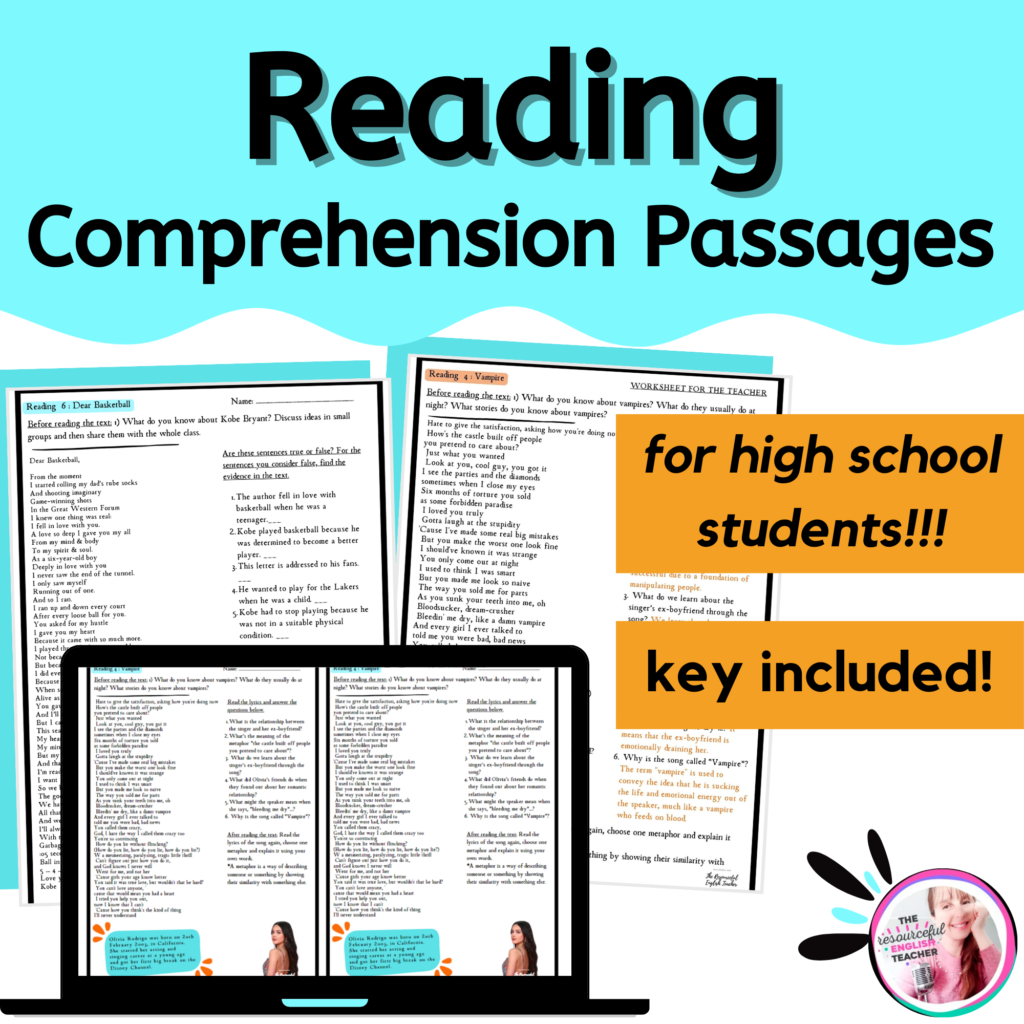How to Teach Reading Comprehension Skills
When teaching reading comprehension to ESL students, it’s important to focus on building both their linguistic and cognitive skills.
First of all, let’s acknowledge why reading is important. Why do our students need to be competent readers and what can make reading challenging for them? The answer to the first question lies in the fact that reading is fundamental to understanding the world, accomplishing tasks, and enhancing our lives. When individuals cannot read, they encounter substantial obstacles in accessing information, acquiring knowledge, and engaging fully in different spheres of society.

What can make reading difficult?
- Some students may not have the language to understand a text.
- Problems with internal reading, internal monitoring
- Attention issues
- Motivation problems
If we can detect what is the problem in our class that hinders learning, then we can address the challenge with the right expertise and tools. Fortunately, there are lots of strategies and techniques available in the ELT world ready to help teachers.
Scaffolding the text
When we provide support for our students while reading, we facilitate their understanding and involvement in the task. Scaffolding serves as the equivalent of training wheels on a bike, which can be removed once the student has acquired the necessary skills for independent comprehension.
Some Scaffolding Techniques!
Teach Vocabulary
A strong vocabulary is crucial for understanding and interpreting written texts. ESL students may struggle with unfamiliar words, hindering their overall comprehension.
What to do:
- Pre-teach key vocabulary: Introduce and explain important words before reading to ensure students are familiar with them.
- Use context clues: Teach students to infer word meanings from the context in which they appear.
- Encourage word journals: Have students keep a vocabulary journal to record and review new words regularly.
Teach Textual Analysis
ESL students need to learn how to analyze the structure of a text and make predictions based on the information provided. This skill enhances comprehension by promoting active engagement with the material.
What to do:
- Teach text features: Help students recognize and understand common features of different text types, such as headings, subheadings, and captions.
- Preview the text: Before reading, have students look at headings, images, and any other cues to make predictions about the content.
- Post-reading discussions: Discuss predictions after reading to reinforce understanding and encourage critical thinking.
Teach Reading Comprehension Strategies
ESL students benefit from explicit instruction in comprehension strategies to navigate challenging texts and understand complex ideas.
What to do:
- Teach questioning techniques: Instruct students on how to ask questions before, during, and after reading to enhance understanding.
- Model thinking aloud: Demonstrate how skilled readers actively engage with the text by thinking aloud while reading. Examples: Can I summarize the key points in my own words? What are the supporting details for the main argument? What is the relationship between different sections or paragraphs? What does the author imply but not explicitly state?
- Use graphic organizers: Provide visual aids such as graphic organizers to help students organize information and make connections within the text.
Have you checked my latest resource with 14 Reading Comprehension Passages for your high school students? Help them improve their reading comprehension skills with texts that are authentic, relevant and engaging!!!
This is a MUST-HAVE if you are teaching ESL students with an upper-intermediate level of English.
KEY and Notes for the teacher are included in this pack!
Remember, it’s essential to scaffold instruction based on the proficiency level of your students. Provide ample opportunities for practice, and incorporate a variety of reading materials to cater to different interests and abilities. Additionally, fostering a positive and supportive learning environment encourages ESL students to feel more comfortable taking risks.
You might be interested in reading this blog post: Enhancing Language Acquisition Through Authentic Literature
Paula.


